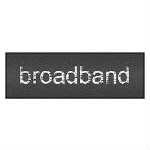 Verizon said yesterday that it will test NG-PON2 technology from Adtran and Calix with an eye toward upgrading to the new technology, which can support symmetrical speeds as high as 10 Gbps or higher per customer. The Verizon NG-PON2 news is important because the company already has deployed passive optical network infrastructure in numerous markets nationwide. And although the company has experimented with various next-generation options, it wasn’t clear what the company’s long-term plans were.
Verizon said yesterday that it will test NG-PON2 technology from Adtran and Calix with an eye toward upgrading to the new technology, which can support symmetrical speeds as high as 10 Gbps or higher per customer. The Verizon NG-PON2 news is important because the company already has deployed passive optical network infrastructure in numerous markets nationwide. And although the company has experimented with various next-generation options, it wasn’t clear what the company’s long-term plans were.
Importantly Verizon NG-PON2 deployments will focus initially on the business market. The carrier initially plans to deploy “a number of business services” in 2017, followed by residential services “as the technology matures and the market demands.”
Verizon may be particularly interested in NG-PON2 for the business market because it may offer a less costly alternative to point-to-point data service offerings.
Ericsson will work with Calix as Verizon tests Calix NG-PON2 equipment. In an interview, Calix Senior Director of Corporate Marketing said Ericsson’s role will be to provide “systems integration and back office work.”
Verizon NG-PON2
As Verizon explained in a press release, NG-PON2 can be implemented as an upgrade to existing PON equipment by adding more wavelengths.
NGPON2 is supported by a 40 Gbps fiber connection from the telco central office to a neighborhood splitter. Each fiber link between the splitter and an end user location can support speeds of up to 10 Gbps bi-directionally. These are substantial speed boosts in comparison with today’s GPON systems, which are based on a 2.5 Gbps connection from the central office to the splitter.
In a press release announcing the Verizon NG-PON2 news, a Verizon executive noted that the company selected Adtran and Calix/Ericsson because they had “developed new designs and some novel, yet different, approaches that put them at the forefront of the industry.”
According to Alan DiCicco, Calix senior marketing director, one of the things Verizon liked about Calix NG-PON2 was AXOS, a software defined networking-based operating system that supports it. Additionally Verizon liked the potential to bond two channels together to deliver a single connection delivering speeds of up to 20 Gbps to a customer, DiCicco said.
When Adtran released its NG-PON2 offering last year, an Adtran executive told Telecompetitor that one key differentiator for Adtran’s offering is the ability to initially purchase it with lower-cost optics, thereby deferring the expense of tunable optics until higher speeds are needed. The executive also highlighted the product’s ability to support SDN.
Alternatives to NG-PON2 that Verizon might have chosen include XGS-PON and 10 gigabit EPON, noted DiCicco.
It would not be surprising to see Verizon opt to use NG-PON2 equipment from both Adtran and Calix/Ericsson as the carrier is likely to want to have multiple sources for the equipment.

